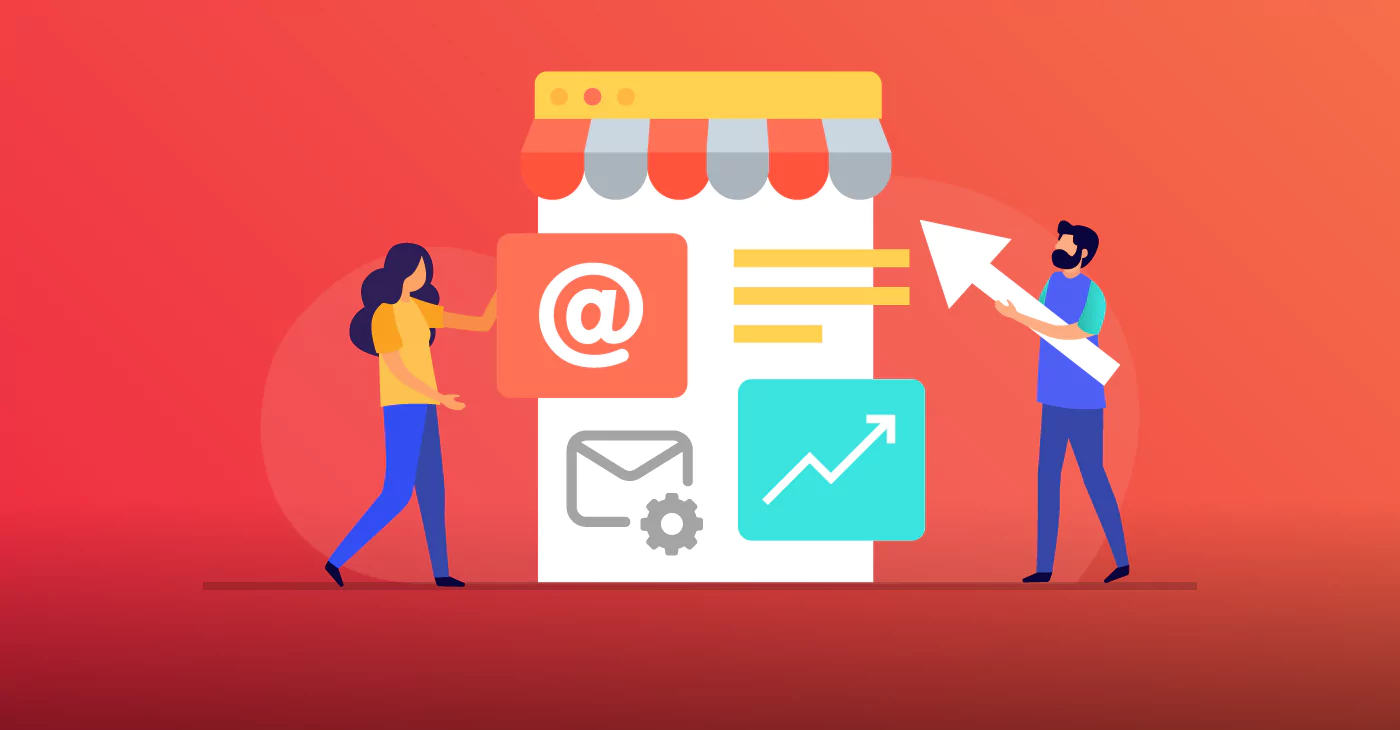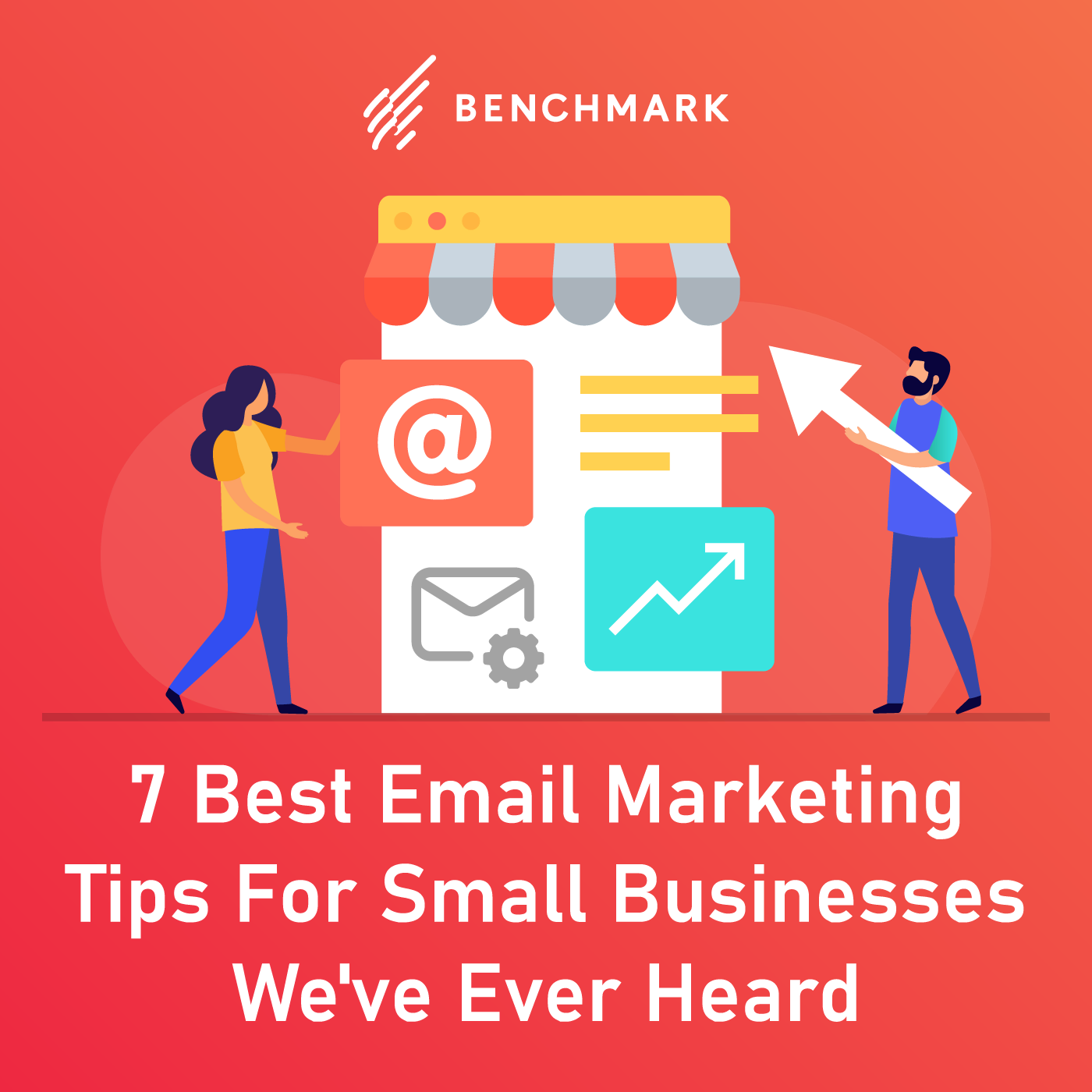The 7 Best Email Marketing Tips For Small Businesses We’ve Ever Heard
August 28, 2019 5 min read

Email marketing looks a little bit different when you’re a small business. With fewer resources to work with, you can’t afford to just throw a scattered strategy at the wall and see what sticks.
Small business email marketing requires a coordinated, cohesive plan that optimizes your network, your budget, and your marketing mojo. And for that, you want to focus on the practices that are guaranteed to stretch your efforts as far as they can go.
You’ve got a few major goals when it comes to email marketing:
- Maximize your open rates
- Maximize your click-through rates
- Actually make it into your recipients’ email inboxes (this one is a biggie)
So how do you do it? We’ve compiled seven of the very best small business email marketing tips we’ve found around the web to help you ace your inbound marketing strategy and get more bang for your email buck. Incorporate these tips into your own practices to start seeing results fast.

1. Never Buy Email Addresses
“Unless your company is in the middle of a merger or acquisition, you’re not going to come across a high-quality email list you can purchase. If it’s for sale, it means the email addresses on it have already been deemed non-responsive or unqualified for marketing outreach.”
Source: Hubspot
You know that feeling you get when you receive a promotional email from someone you didn’t ask to hear from? It’s not a feeling you want to replicate when it comes to your own business and your own potential customers.
Purchased email lists may provide you with a lot of addresses, but that very rarely equates to high-quality leads. Plus, if any of the recipients are in Europe, you’ll be violating the GDPR (General Data Protection Regulation) by not having them opt-in first. Resist the urge to purchase email addresses and instead focus on cultivating your own list of opt-in contacts.
2. Take the Guesswork Out of Subscribing
“This seems obvious, but you would be surprised how many small companies–from consulting businesses to corporations–have a regular email newsletter but do not have a place to subscribe for emails on their website.”
Source: Blue Corona
Speaking of building that opt-in list, make it as easy as you can for people to sign up to receive emails from you. The more barriers you have in place, the less likely they are to follow through. Have an active “Subscribe” link in a clear and obvious place on your site, and don’t require too much information to sign up — just a name and email address is sufficient.
Equally important: make sure the “Unsubscribe” button is obvious on your website and in your emails, too. The CAN-SPAM act requires all of your recipients to be able to unsubscribe within your email.
3. Optimize For Mobile
“According to Litmus, more emails are read on mobile devices than they are on PCs. In fact, statistics show 54% of emails are read on mobile devices. If you don’t optimize your email campaigns to be appealing and digestible across multiple devices, you stand to miss out on new sales, new customers, and new website visitors.”
Source: Pardot
With more than half of emails read on mobile devices, it’s crucial that your messages are designed to have the same impact on small screens as they do on large ones. Everything from texts and images to links and ads should be formatted for both desktop and mobile, and you should test your emails on both devices before sending them out to make sure that nothing gets lost in translation.
4. Offer Something of Value
“If you want to increase your user engagement metrics, your campaigns need to add value without creating work for your readers.
Customers get waterboarded with promotional emails every day. They get distracted. And you lose them – even though they wanted to stick around.”
Source: ActiveCampaign
General company updates may be interesting, but they’re not enough to keep people opening your emails over and over again. For that, you need to provide tangible value, such as a coupon code, free asset download, personalized content, contest entry form, or some other benefit available only to subscribers. A free download or 5% off a future purchase is a small price to pay for a funnel-driving conversion.
5. Avoid Spam Filters
“Spam filters use a long list of criteria to decide whether or not your campaign will be placed in a recipient’s spam folder. The list of spammy criteria is constantly growing and adapting.”
Source: Mailchimp
You’d think a quality email from a quality company would keep a message out of spam, but it’s not always the case. Pay close attention to the features and actions that help you avoid spam filters, including:
- Clean and proper HTML coding
- Good text to image ratio
- Having an entirely opt-in subscriber list
Always test your emails before sending to make sure they’re not going to spam, especially when you make changes to your template design.
6. Integrate Social
“Increasing the number of people who see your link will increase the number of people who click on it. So, be sure to extend the life of your email by adding social sharing buttons.”
Source: Hubspot
Have your emails do double duty by driving traffic to other platforms — particularly your social channels. Add social share buttons, include a pre-written tweet that recipients can share, and make it easy to find and connect with your brand on all of your social pages. The more you can diversify where your marketing happens, the better chance you’ll have of turning new leads into new customers.
7. Keep an Eye on the Competition
“If you want to make your email campaigns more successful, it could be helpful to see how your local competitors are handling their email marketing campaigns. Subscribe to their email lists and see what type of content they’re including, promotions they’re offering, what kind of emails they said, how often they send a newsletter, and what elements they included in their email template design.”
Source: Blue Corona
A little market research can go a long way. Subscribe to your competitors’ email lists to gather ideas and better optimize your content to beat theirs. Pay close attention not just to what they send, but when and how often. And while you shouldn’t be outright copying anyone else’s strategy, there’s no reason you can’t use their emails to inspire your own inbound marketing efforts. At the end of the day, your content should be all yours — different from your competitors’ content and designed to be more impactful.
There’s no one secret that will make your small business email marketing more successful. The trick is to incorporate many different tips and strategies that are specifically designed for small business growth. The ones above are a great place to start, so if you’re not following these tips already, now is the time to put them into practice.





